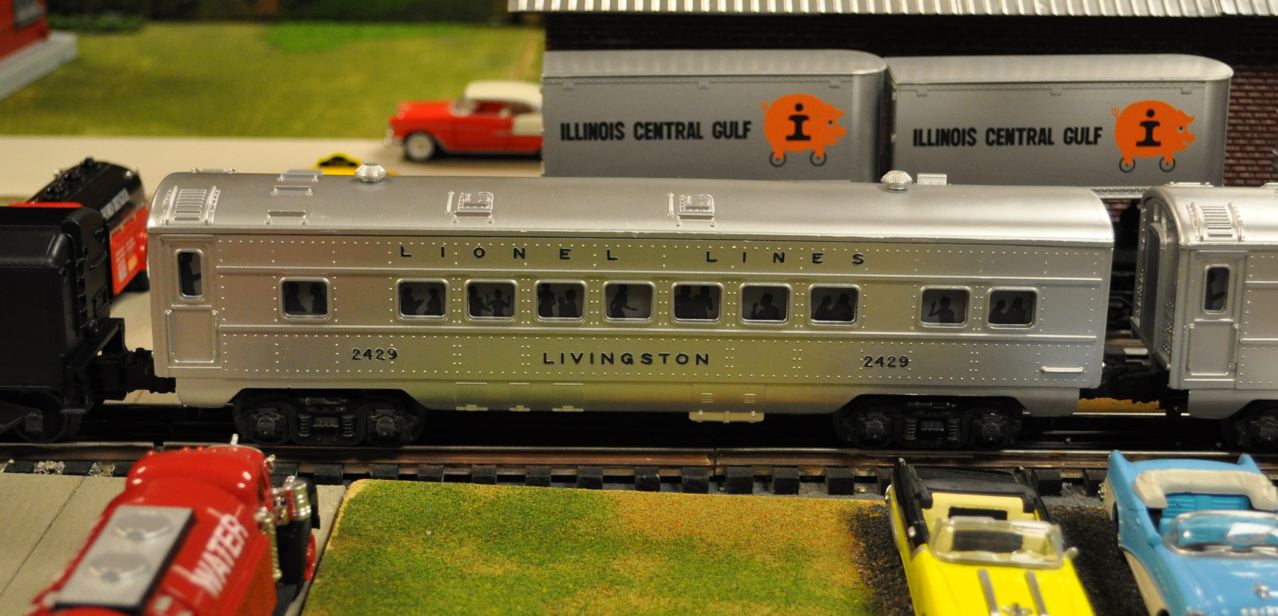Just wondering if any of you have removed paint from old postwar cars and what you use. I have a bunch of 2400 series passenger cars such as the Maplewood that are totally beat paint wise that i would like to paint and use again but am not sure of what will remove the paint without damaging the plastic. Thanks Rick
Replies sorted oldest to newest
I've had great success with POWDERED tide removing paint (even layers of paint) from both postwar plastic and pre-war tin trains.
The only difference is the water temp; hot from the sink for plastic and hot as high as almost boiling for tin. Extra hot water for plastic WILL warp it. You can actually use just hot water from the sink for both, but the hotter water for tin just works faster.
About 1 cup of the powdered Tide per 2-3 gallons of water, soak overnight.
I have removed paint from those very same cars using Castrol GT LMA brake fluid and a tooth brush and then washing them in warm water and dish detergent.
Rick, I did the same cars using liquid Tide plus some Simple Green. Took a few days but zero damage to the cars.
How do you plan to reletter them? Thats the tedious part.

Pete
Pete have given it a bit of thought , might just take some thin styrene and make nameplates I can letter up for another road name. could do the same foe orig names but have not found decals. how have you done yours. the heat stamp on some is very noticable and deap and on others not so.
I sand out the heat stamp indications with 2000 grit sandpaper after stripping and before repainting.
As to the lettering, that is actually the easy part. Black letters are easy to make decals - see my post earlier today in the "custom boxcar" thread.
After painting and applying the decals spray with Tester's Dullcoat to make the decal film disappear
I tried sanding a second set so I could use transfers (J&A Hobbies has them) but realized its almost impossible sand the heat stamp down without also sanding off the rivet detail. On the set pictured I painted the silver, then used liquid masker around the letters, and used Floquil black to fill in the stamp. I did this many years ago. Later a forum member said he used cheap craft store acrylic in the stamp. After it dried he was able to scrape off the excess. I think this would only work if the base paint was solvent based. I used testors spray paint. If I ever do another set I would use the acrylic paint trick for the letters.
BTW J&A is usually at York in the Orange Hall if you decide on transfers. If you google them you will get a phone number. They have no website. I would call first to make sure they have them.
Pete
If the stamp is that deep, I'll first fill it with Bondo Glazing & Spot putty, let dry, then sand.
You can find it at any auto part chain store, comes in a tube.
There are many more ideas on this forum because this question has been asked often. Just use the archives and you’ll know all that you need to know.
I’ll throw my 2 cents in, where I use Castrol Super Clean, full strength in a Spackling trough. It comes in Gallon jug, “purple “, from Walmart, as cheapest. It takes less than a day, and scrub with old toothbrush. Then rinse under hot water, and let it dry. Then I rub down with Isopropyl alcohol, just before repainting. It’s completely safe with plastic or diecast, and never had a problem or bad results.
TeleDoc posted:I’ll throw my 2 cents in, where I use Castrol Super Clean, full strength in a Spackling trough. It comes in Gallon jug, “purple “, from Walmart, as cheapest. It takes less than a day, and scrub with old toothbrush. Then rinse under hot water, and let it dry. Then I rub down with Isopropyl alcohol, just before repainting. It’s completely safe with plastic or diecast, and never had a problem or bad results.
Just curious, is this stuff reusable? And where do you find it at Walmart - in the auto section? Or other?
Absolutely reusable, but suggest straining it after initial stripping is done. I have stripped up to 4 diecast locos, before dumping it. Diecast locos harder to strip, than plastic, but safe on plastic.


